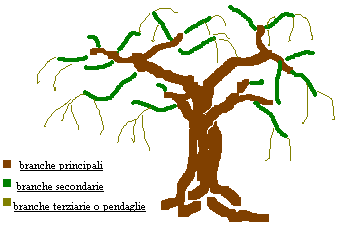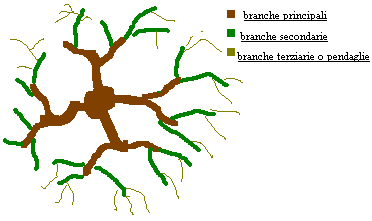taggiasca.com
pruning

The pruning covers, between all the coltural practices, a fundamental role for the production.
In our zone never a breeding, so the plants in the time have grown in irregular shape.
The pruning was based exclusively on the concept of rimonda (periodic and accidental renewal of branches of various order). In short branches were eliminated alone dry or worm-eaten branches without considerate anything other.
For this cause the olive trees have grown to excess with large stumps constituted by many branches that, along the time, become ture independent trees.
Now there is a tendence to restructure the old tree in a way to make easy all the coltural operations (antiparasitic pruning, treatments and harvesting).
Think to the new method to spread olive nets: sewn one to the other until forming an unique sheet as large as the estate.
Who has already adopted this system also has noticed as it is cumbersome and little practical old stump composed by many branches: much best to have alone a vigorous log well formed.
The "modern" tree don't have to exceed the height of 3.5-4 meters and the foliage diameter of 5-5.5 meters.
The wide diametrical foliage expansion and the best lighting of the external surface assure notable productive increments that need to be supported by adapted nourishing contributions through a corrected cultivation technique and even from irrigation.
The shape that assume the foliage can be defined an acephalous flat vase and has been called "Umbrella breeding shape".
 The umbrella structure substantially is achieved through the
two opposite branches that, to a certain distance from the
insertion, branch off in four permanent orthogonal branches (main branches) inserted to brace on two various levels of
the log in terminal position.
The umbrella structure substantially is achieved through the
two opposite branches that, to a certain distance from the
insertion, branch off in four permanent orthogonal branches (main branches) inserted to brace on two various levels of
the log in terminal position.The initial development of each branch will have a slowly ascending course. On each main branch the formation of secondary branches will be stimulated, and they will assume horizontal position to assure the expansion of the foliage.
 On the secondary branches, for subsequent ramifications, the
third branches ("pendaglie" or pendane in local dialect) will adopt a hanging position.
On the secondary branches, for subsequent ramifications, the
third branches ("pendaglie" or pendane in local dialect) will adopt a hanging position.On the "pendaglie" will be formed numerous small branches rich of tiny twigs one-year aged; these one ensure an abundant production and a continuous renewal of buds destined to fructify next year.
copyright © 1999 - 2000 by It-Web Information Technology - all rights reserved